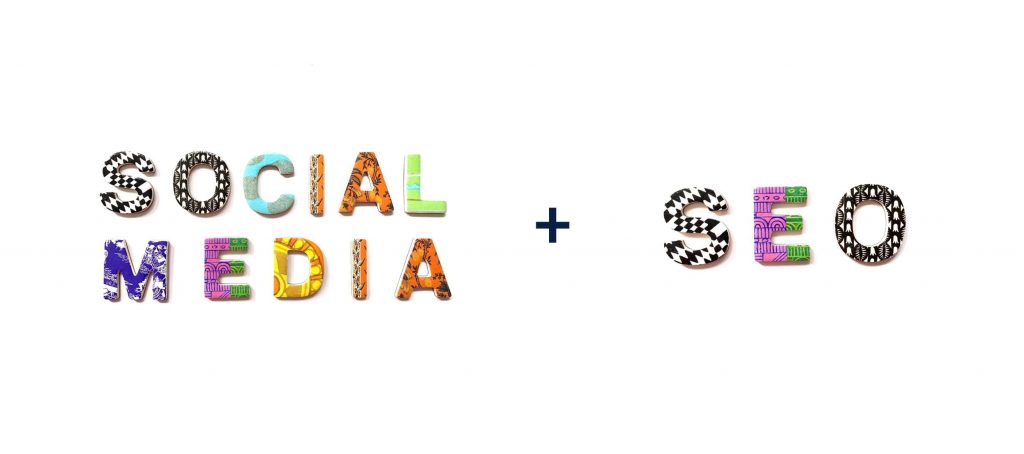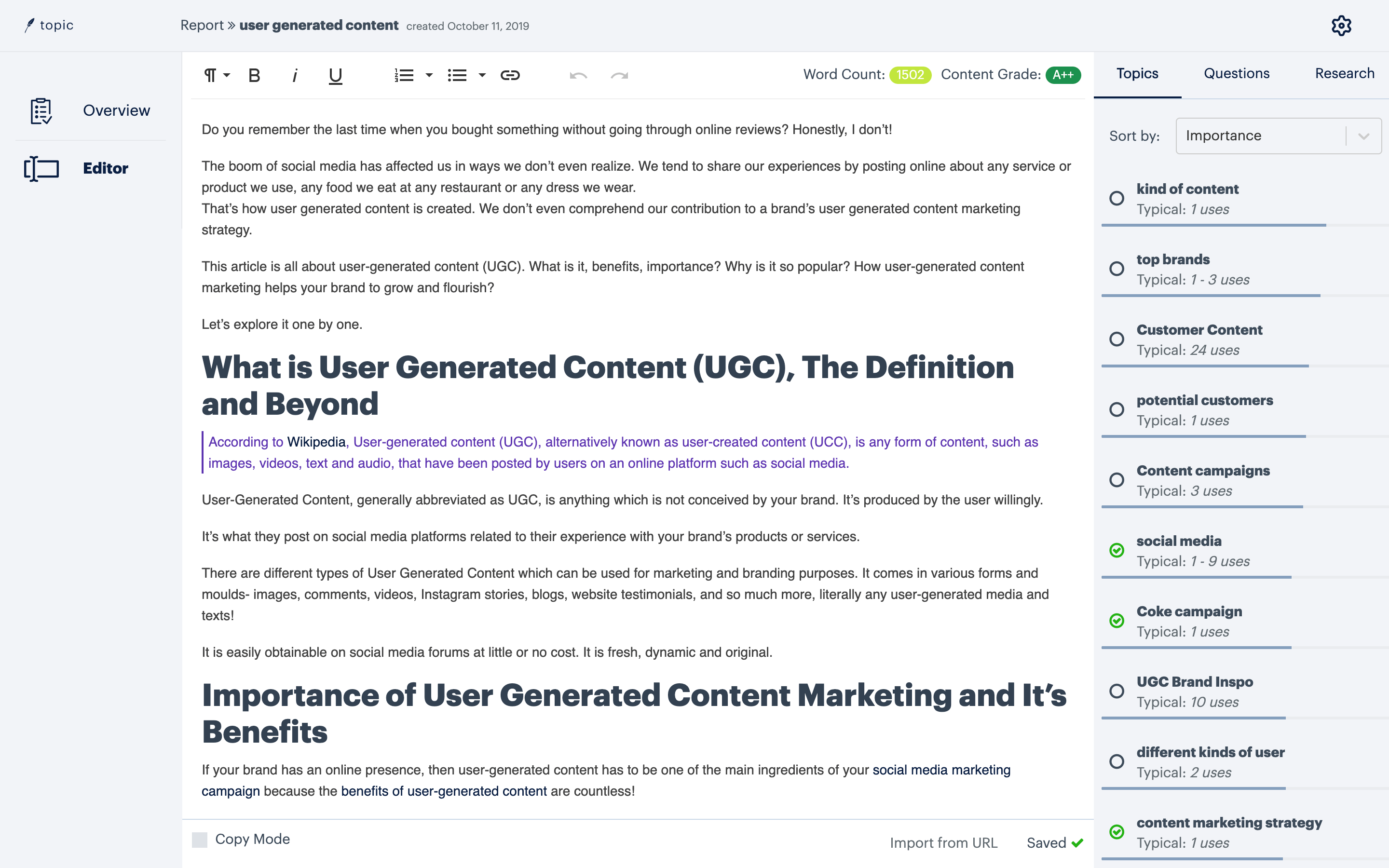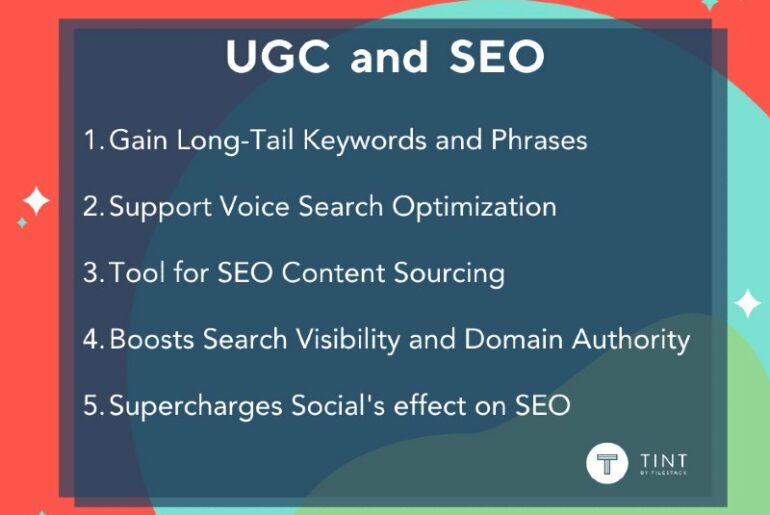Social media professionals are often wary of touching SEO. Why? Because SEO has a reputation for being a highly technical dark art reserved for specialists. And for good reason. Search engine algorithms are a constantly chaning black box that no one understands, the best minds in search regularly give out contradicting advice, and the results are less straightforward than paid channels.
Luckily, the basics of SEO are still easy to grasp. And as a social media pro, it’s worth knowing. An enormous amount of business comes from organic search. 51% of all website traffic comes from organic search traffic and 81% of people search online before making a purchase according to Brightedge.
The bottom line: If you’re a social media manager, learning some basic SEO will make your work more impactful.
How SEO Works at a High Level*
* For the purposes of this guide I will be using “search engine” and “Google” interchangeably with the understanding that there are many search engines in the world
First, let’s get a high-level understanding of how SEO works. Put yourself in a search engine’s shoes. As a search engine like Google, your goal is to deliver the information the searcher is looking for. The searcher’s goal is called “search intent” in SEO parlance.
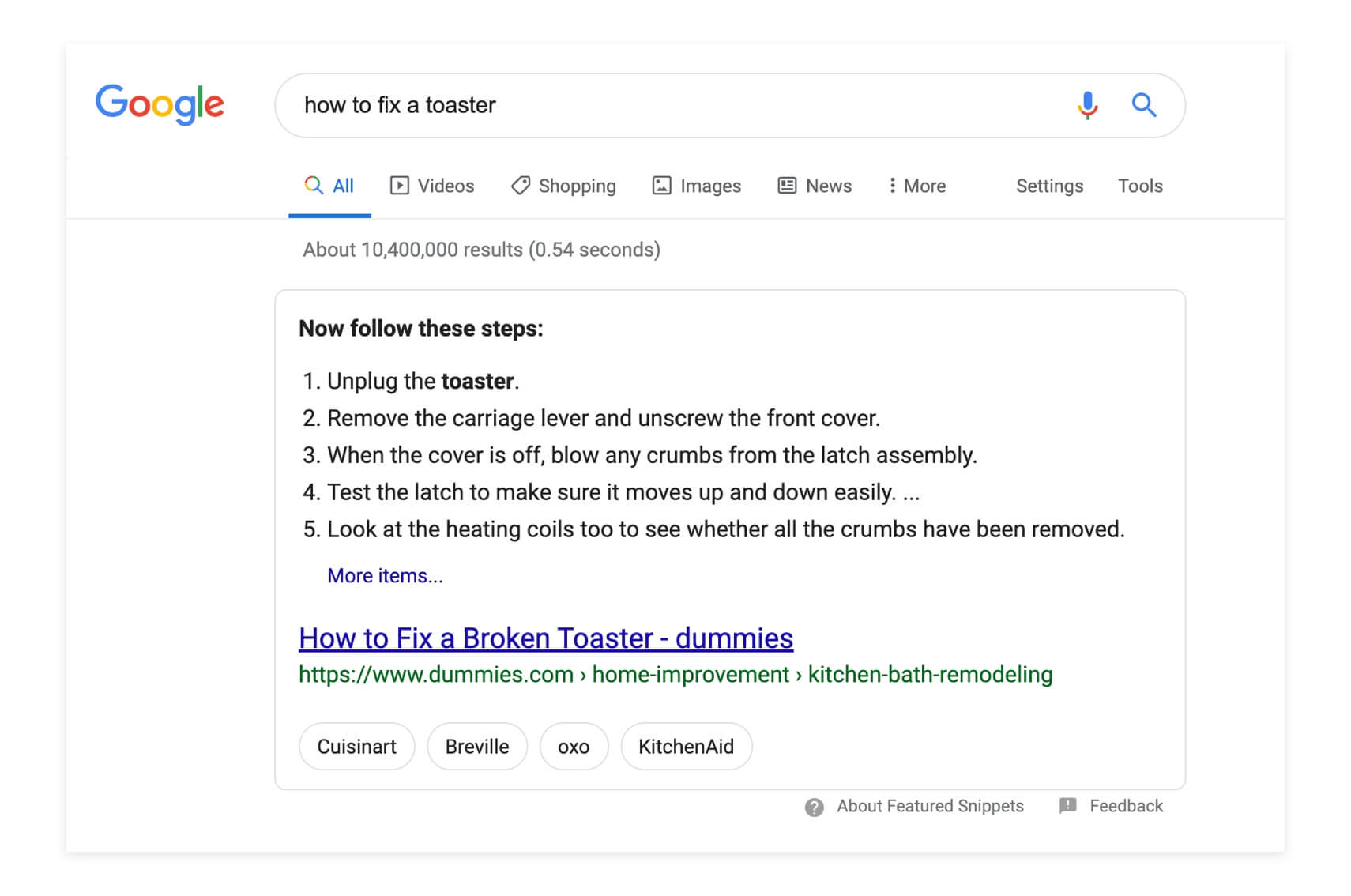
If a searcher is looking for “how to fix a toaster”, you would want to deliver the most comprehensive guide to fixing toasters. If instead, the search is for “showtimes near me”, that might be a list of movie times for local theaters. In another case, the searcher could ask, “how tall is Obama?” and you would want to deliver a single definitive answer (6’1”).
All of these are different search intents.
The challenge for search engines is how to match the vast library of content on the web with these search intents. To do this, they load and keep a copy of nearly every page of every website through a process called “crawling”.
Then each page is evaluated based on different criteria, or ranking signals to figure out which content has the highest likelihood of satisfying the searcher’s intent. These signals surface high-quality content and the very-best pages show up at the top of the search results. Google created a video to help make this process easier to understand:
When it comes to social media and SEO, these ranking signals are the main way the two interact. So, let’s dive deeper:
SEO Ranking Signals
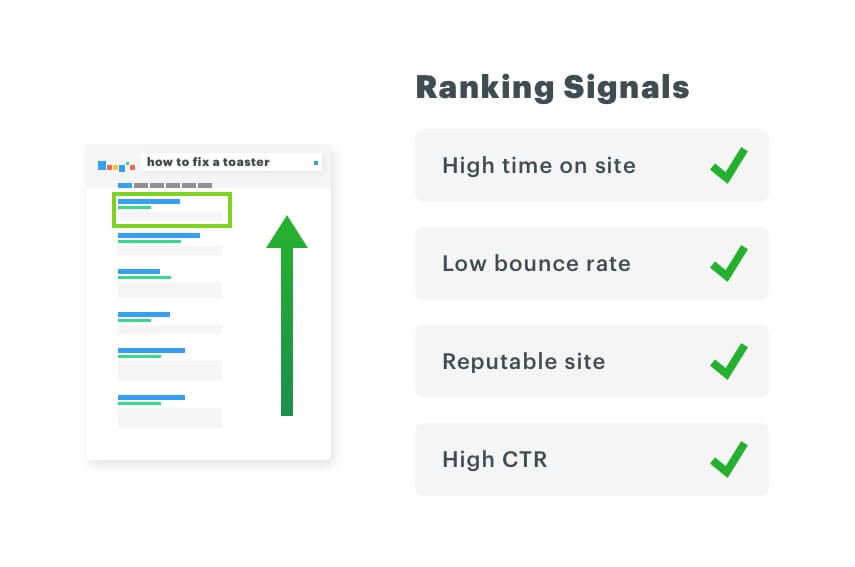
There are hundreds of ranking signals that search engines consider. However, all of them serve a single purpose, which is to help Google identify “high-quality” content and maximize the probability that searchers are happy with the results. The most important signals can be categorized into two groups.
Engagement Ranking Signals
Engagement ranking signals show how engaged the user was while reading the content and serves as a proxy for the content’s value. The two most important metrics here are Time on Site and Bounce Rate. Meaning the longer the user stays on the page and the less they bounce, the more value the user found in the content.
For social media marketers and content creators, engagement signals are where you have the most influence. Everything from the layout of the page to the story the content tells directly impacts how engaged readers are. Later, we will go into how social media channels and UGC can be used to improve these signals and grow organic search traffic.
Fun facts: Google gives out Google Analytics for free so they can collect time on site and bounce rate information and use it in its search ranking algorithm. This is also why recipe websites are often filled with so much fluff content at the top, an unfortunate result of food bloggers gaming the system and forcing users to stay on the page longer.
Reputation Ranking Signals
Reputation ranking signals help Google understand how reputable a website is. A site like nytimes.com should obviously be considered more reputable than a small personal blog. So how does Google figure this out?
The most important reputation signal is how often other websites link to your website. When a reputable site links to your site, they are vouching for your brand’s reputation. In the same way, Google equates these links to reputation or “domain authority”. Obtaining these inbound links, or “building backlinks” takes time and effort, but a higher authority means a higher rank for every page of a website.
One thing to keep in mind is that not all links are created equal. Links can be divided into two groups: “no follow” and “follow”. These designations tell Google whether they should follow these links when crawling a site, and whether to count a link when determining domain authority. Links from social media are “no follow” which means they do not directly contribute as a reputation ranking signal.
Although improving a site’s reputation ranking signals can take a significant effort, it’s important to consistently build backlinks at every opportunity to give your site a chance to rank. There are a variety of SEO techniques involved in doing this, which are best covered in Brian Dean’s Definitive Guide to Backlinks.
Do social media shares increase domain authority?
As was mentioned before, links from Twitter, Facebook, Pinterest, and other social networks aren’t directly considered in the same way that regular links are when Google calculates domain authority. Since social networks allow paid content promotion, Google does this to prevent gaming the system. Another reason for this is because social media shares happen 24/7 and take place faster than Google can crawl. Matt Cutts, the official spokesperson for Google goes into more detail here in a video:
However, one important benefit is that incoming traffic from social shares allows Google to measure time on site and bounce rate. If the content is good and visitors stick around to read it, the positive signals improve the chances the site’s content will rank well. There is also evidence that social signals do influence search engine rank. Hootsuite found a strong correlation between the two in a recent experiment.
How To Use Social Media and SEO Together
Now that we know how search engines work, how does a social media marketer use this knowledge in practice? Let’s look at a couple of real-world tactics:
Using Social Media Content (UGC) To Boost Website Engagement
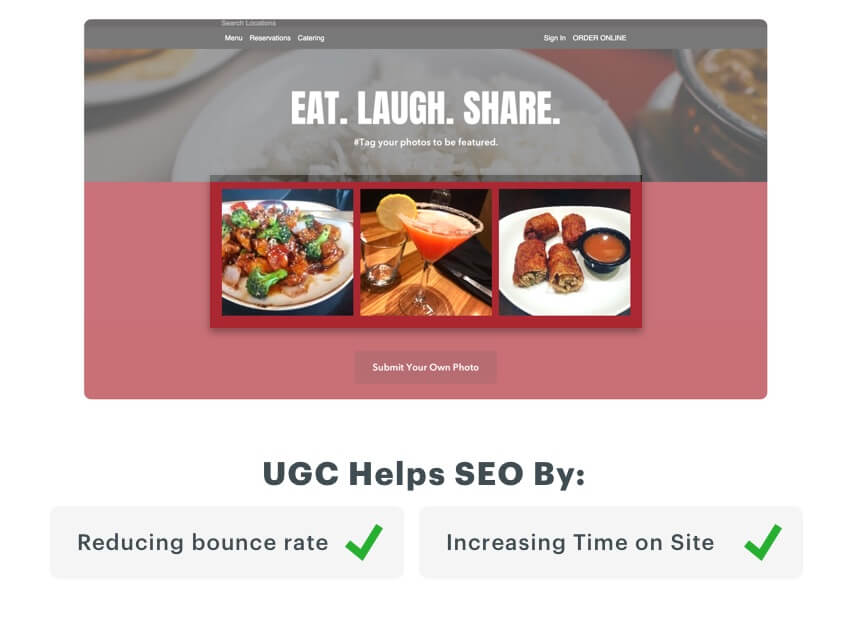
For those with an existing audience, UGC is an easy way to increase visitor engagement on your site. Because engagement metrics like time on site is so important for how Google ranks content, using UGC impacts a page’s search performance.
So how do you integrate UGC into your website? With TINT, you can seamlessly integrate hashtagged and user-generated content from any social network. Simply log in, connect your social accounts, request rights to content, and add the embed code to your site.
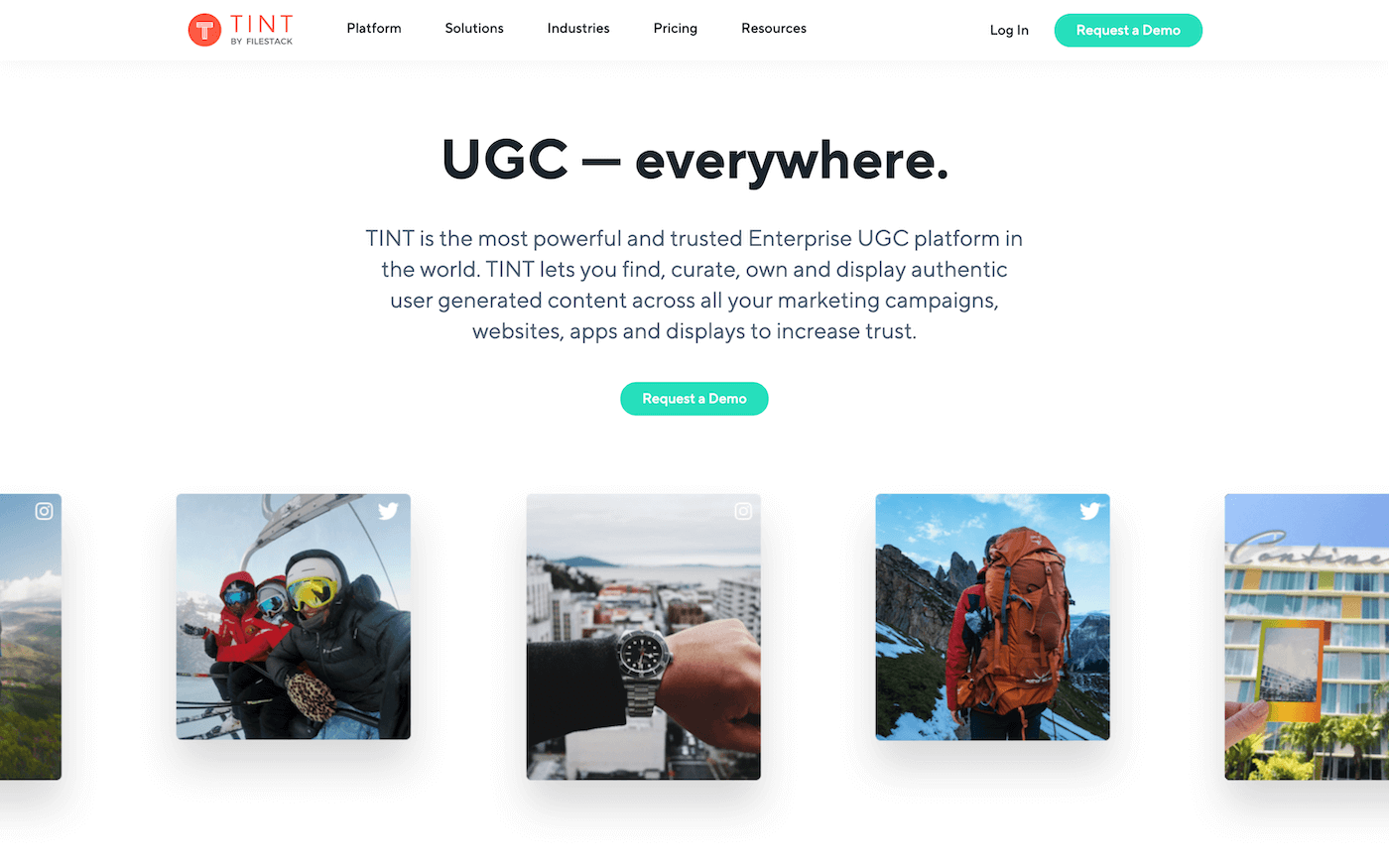
And even better, the benefits go beyond SEO. Users are more likely to trust the content of a website if they see content from other users. 93% of consumers find UGC to be helpful when making a purchasing decision.
Use Social Media as Inspiration for SEO Content
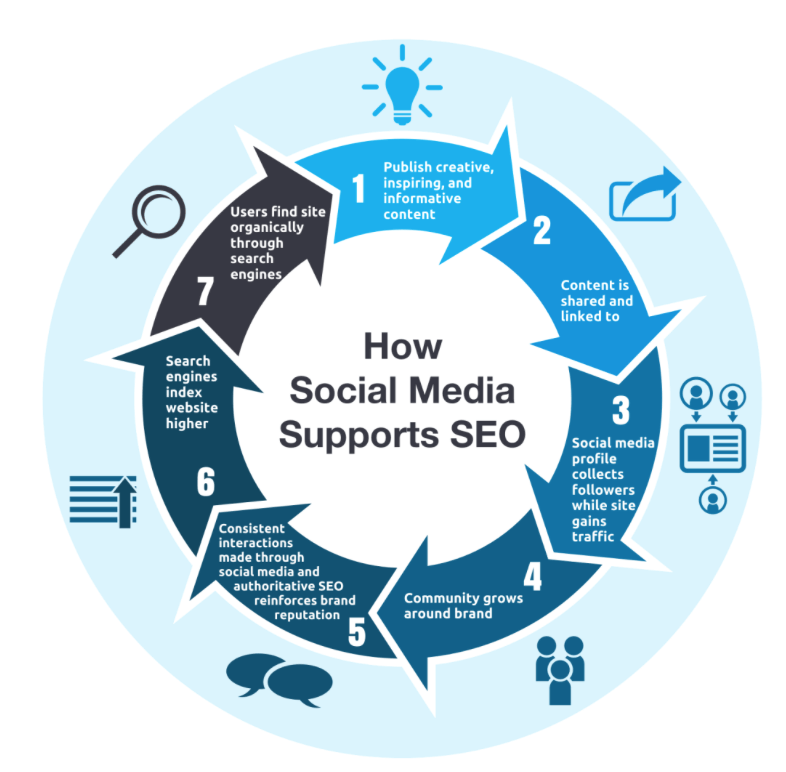
Creating compelling content is more difficult than ever before, and it’s essential to use every tool available to ensure your content is found online. One approach is to use social media to identify interesting topics in your industry.
“I use Twitter to find topics that are trending now and build content around those topics that make sense for my clients. You can take it one step further and use Google Trends and Reddit to further filter content based on popularity”, says Chris Giarratana of StrategyBeam.
If you have a large enough audience, you can also use social media platforms as a testing ground to find content that resonates with your audience. This can help you develop content for search that has a better chance of ranking. Even looking at something as simple as which tweets or facebook posts gain the most likes or shares can point you in the right direction.
Use Social Media to Promote Content and Build Backlinks
Social media enables you to quickly reach website owners and build valuable backlinks. “I use social media to let various organizations and individuals know when they are referenced in a piece of content that I’ve put together. That way, there is a higher chance of them linking to my piece vs simply emailing them. This leads to more links, and a faster climb to the top of the rankings”, says Phil Strazzulla of SelectSoftware
“Create a social media campaign designed specifically with the goal of developing your backlinks in order to increase SEO. Many social media accounts are used by sites to collect information for blogs, lists, journalism, and more. Use attractive imagery they would post on their articles with informative copy that could add to their own content and attract their attention with tags and hashtags. Not only will you be increasing your engagement on social media, and boosting your algorithm, but you’ll also be making important connections for backlinks and so much more.”, says Mia Germain of 71Above.
Use Social Media to Build SEO Partnerships
Identify a handful of prominent influencers and blogs in your space and start interacting with them
“I recommend commenting on their posts, asking questions, retweeting and sharing their posts, etc. The key is to focus on helping them, not getting what you want. Post positive feedback, promote their stuff, etc. The benefits for you will come later – your goal at the start is just to help them”, says Adam Thompson of ReliaSite.
Over time, you’ll start to build a relationship, which can lead to:
- Guest blogging opportunities
- Them sharing your posts or content
- You being able to pitch your content to be included in their piece
- Organic linking that naturally happens between high-quality publications
What SEO Tools Do I Need to Use As a Social Media Marketer?
Now that we’ve learned how to use the two channels together, what tools are the most helpful?
As a social media marketer, the SEO-tool ecosystem can be overwhelming. Most tools are tailored to the needs of a data analyst with a strong focus on metrics and reporting. Luckily, we’ve picked out a few easier-to-use SEO tools to help you harness both channels together:
Google Search Console for Content Inspiration
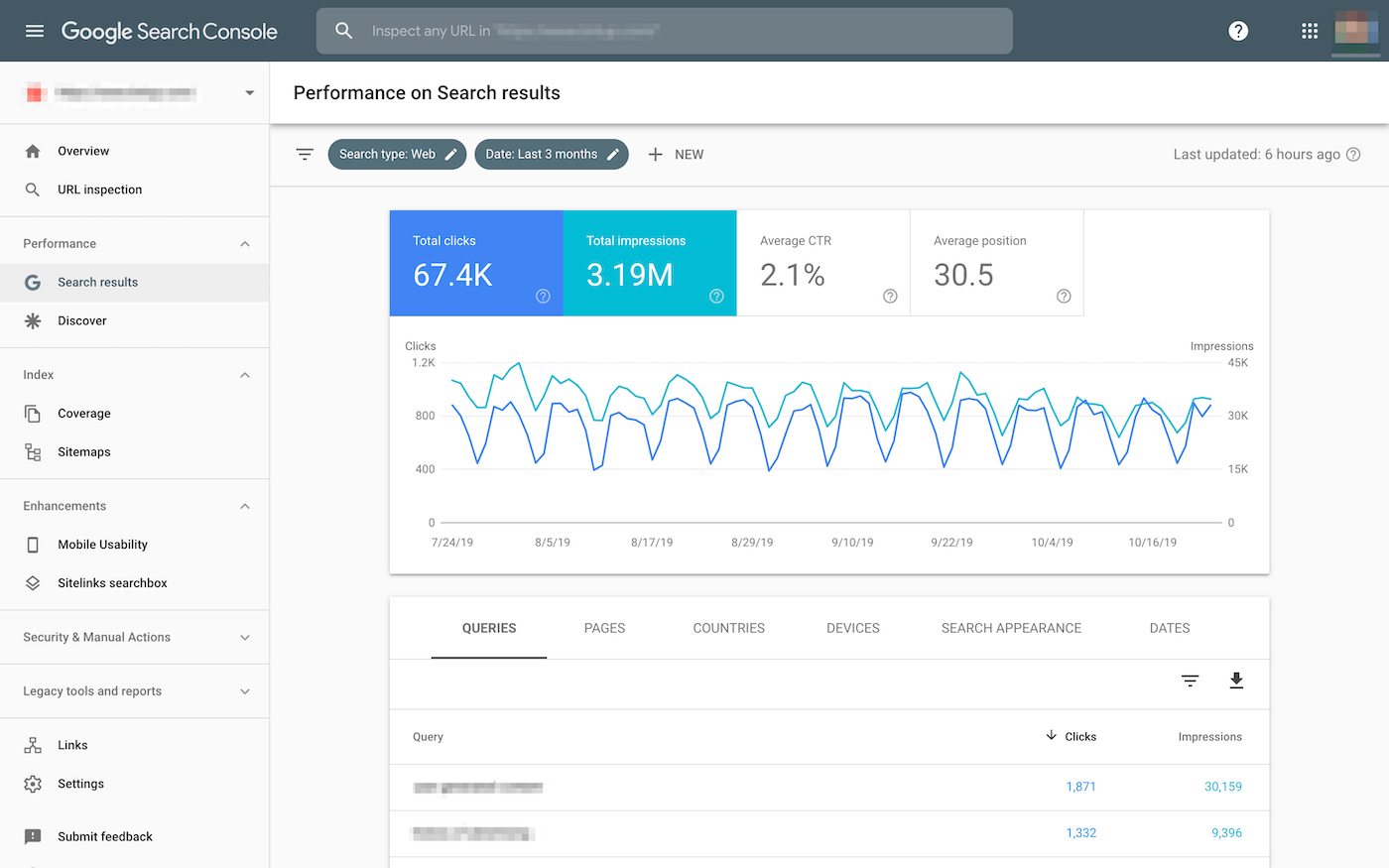
If you need search data, get it straight from the source. Google Search Console, or GSC, gives marketers 4 essential metrics for (almost) every page and keyword for your site: position, impression, clicks, and click-through-rate.
Although the dashboard can be daunting at first look, the data can be invaluable for coming up with ideas for new social content. Medium to low-volume search queries are a great way to get ideas for what your social media audience is interested in reading about. It can also teach you about the vocabulary your audience uses for your product or service.
Topic for Content Optimization
Now that you’ve used Google Search Console to identify what content to create, use Topic to create compelling content that resonates with your social media audience.
Topic is a powerful content optimization tool that uses existing SEO content to give you guidance on how to write comprehensive content about a specific topic. Just paste in a specific topic that you plan to write about, and it gives you important sub-topics to talk about. An interactive editor allows you to paste in a draft and get immediate feedback.
Hootsuite for Building SEO Partnerships on Social

Hootsuite is a social management tool with many features including scheduling, analytics, and content curation. But one feature that works well with SEO is Hootsuite’s monitoring functionality. By monitoring organizations that also speak to your audience, you can develop a relationship on social that can then progress to a deeper content partnership. This can lead to valuable backlink building opportunities that would be difficult to obtain otherwise.
Key Takeaways
- Basic SEO is an essential skill for social media marketers
- Search engines use various ranking signals to match content to various search intents
- Links on social media do not directly count towards Google’s reputation ranking signal
- However, social media can still be used to influence both engagement and reputation ranking signals
- Using user-generated content from social is a great way to increase user engagement on your website
- SEO relies on establishing relationships with other organizations and bloggers, which social media can facilitate

